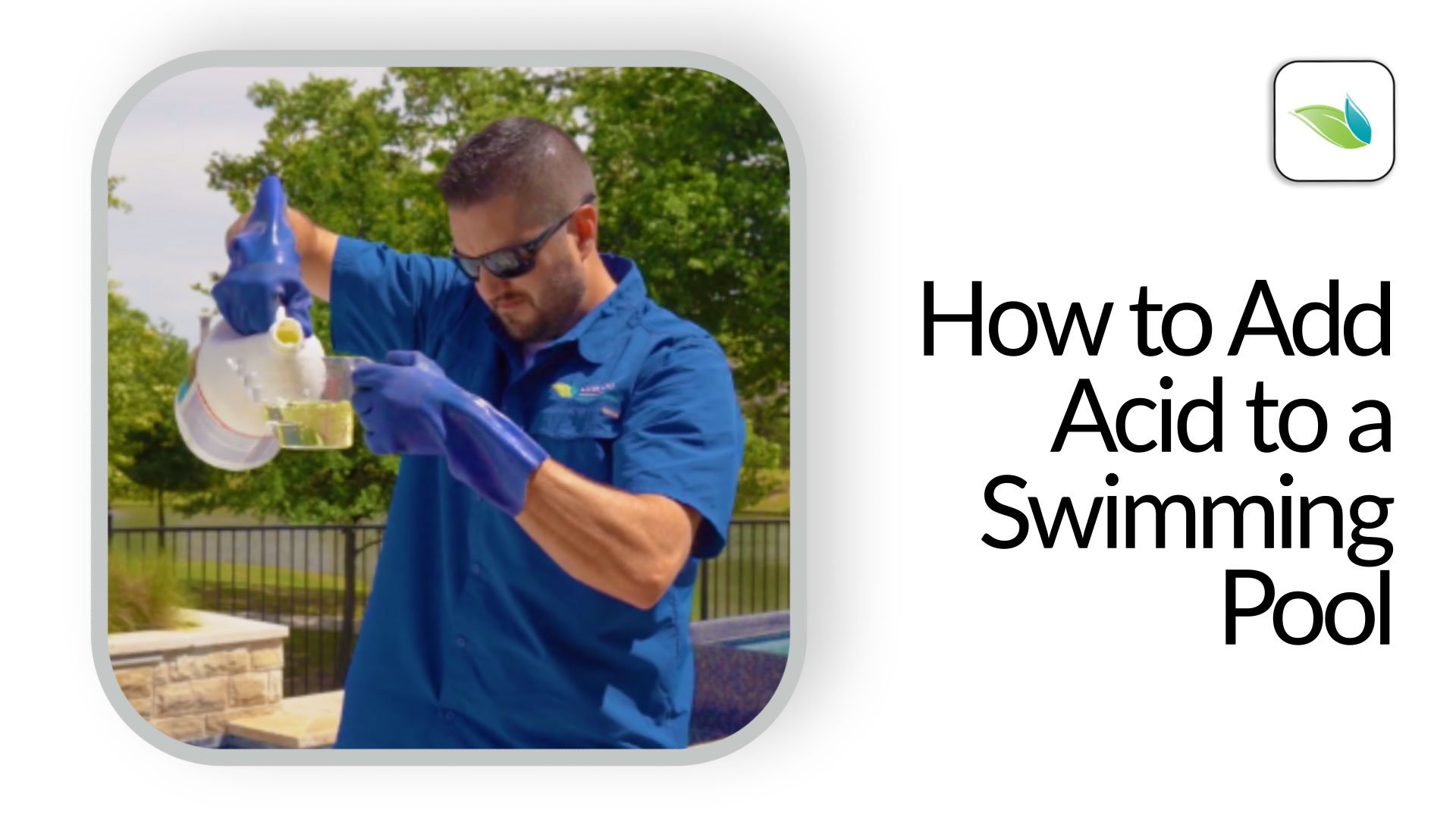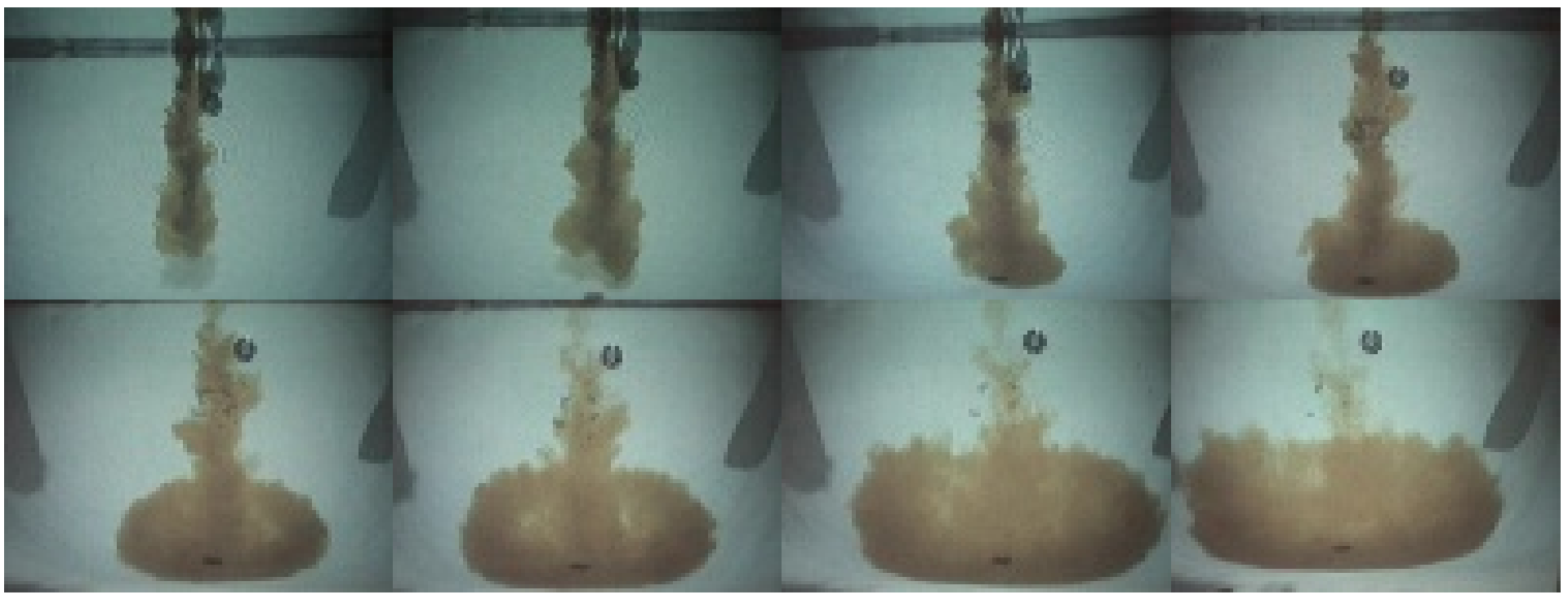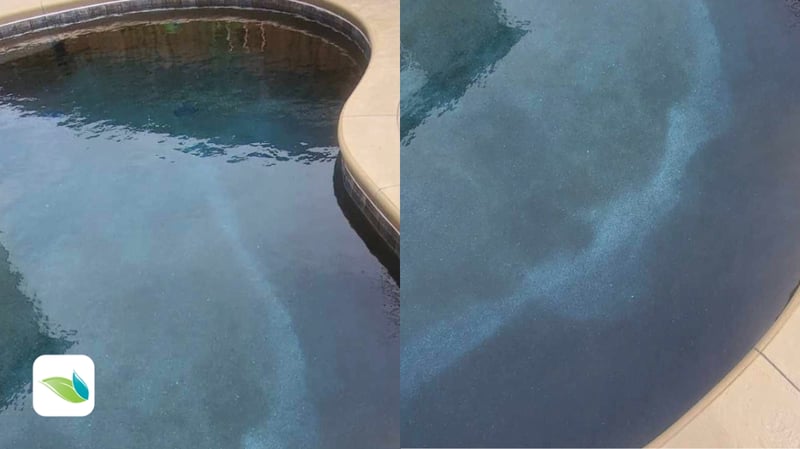How to Add Acid to a Swimming Pool

Do you need to reduce alkalinity or pH in a swimming pool? If so, you may need to add some acid. This article introduces the best known practices for how to safely handle acid products, and how to add acid to a pool properly. Yes, it DOES matter how (and where) the acid is poured in the pool. And we debunk the myth of the "column pour."
Pop Quiz! You've got a 20,000 gallon residential pool with a pH of 8.0 when you test it, and you want to lower the pH of the pool down to 7.5. How much muriatic acid do you need to add?
We have been asking this question a lot lately, because the answers we get reinforce our opinion that we are an industry of habits...and many of those habits are in need of an update. Most people say about half a gallon. Which is astounding, because the actual answer is about half of that. It only takes about a quart of acid, depending on the alkalinity of the pool.

Think about that for a moment. Unless you are using a dosing calculator that factors in alkalinity (like the Orenda App), did you know that it took just one quart? We certainly didn't. But now we know.
Our habits have had many of us adding a half gallon, and that's double the acid we need! Add that up over a year. How much acid have you been wasting? How much money have you been wasting? And most importantly, what do you think that extra acid is doing to your pool chemistry and the pool itself? We share this example because it exposes the importance of the topic we are discussing today.
Why we adjust pH and alkalinity
The answer to this question is not "because the textbooks tell us to." The reasons we should adjust pH and alkalinity are to keep water in LSI balance; and in non-stabilized pools without any cyanuric acid (CYA), to maintain efficient sanitization. In non-stabilized pools, pH controls the percentage of strong chlorine (hypochlorous acid, HOCl). Therefore, pH greatly impacts the strength of chlorine. CYA changes the game, however, and that's another conversation for another time.
Related: What is Alkalinity?
We know that many factors will raise pH over time, so reducing pH is a very common practice. And each time you add acid to reduce pH, you're reducing some alkalinity in the process too.
How to lower pH and Alkalinity
There are primarily three (3) types of acid that are used for pH and alkalinity reduction in swimming pools. There are other acids in the pool business, such as cyanuric acid and citric acid, but they are not used for adjusting pH or alkalinity levels. The three acids used for pH and alkalinity management are Muriatic Acid (Hydrochloric, or HCl), Sulfuric Acid (H2SO4), and a dry acid called Sodium Bisulfate (NaHSO4). There is also Cyanuric Acid (CYA), but it is not used for pH or alkalinity control. We just mention it here for the procedure of how to safely use it.
Related: Total Alkalinity vs. pH, and their Roles in Water Chemistry
Muriatic Acid
Hands down, the most common acid in the pool business is Hydrochloric Acid (HCl), aka muriatic acid. As we have discussed in other articles, acids have a higher concentration of Hydrogen. Since its pH is less than 1.0 (<1.0 pH), muriatic acid is over a million times more acidic than neutral water (7.0 pH). This is one of the reasons why diluting acid is so important. Straight muriatic acid is so aggressive it can easily burn through flesh, metal and concrete. Plastic and glass can contain it, however.
Sulfuric Acid
Another liquid acid used in the pool industry is Sulfuric Acid (or Sulphuric Acid). Its formula is H2SO4, which contains 2 Hydrogen, 1 Sulfur and 4 Oxygen. This is less common than muriatic, but is still readily available. Sulfuric acid also has a very low pH, and should be applied the same way, albeit with slightly different dosing. Note: The Orenda App only doses muriatic acid, not sulfuric.
Sodium Bisulfate (dry acid)
Sodium bisulfate is a dry, granular form of acid. This makes it considered safer for handling, and it is far less corrosive in a pump room or other space. It goes without saying that sodium bisulfate needs to be stored in a dry place, without moisture getting into the container. Sodium bisulfate must be pre-dissolved before being added to the pool, just like any other dry chemical. Some commercial pools will add dry sodium bisulfate into a mixing tank of water to pre-dissolve and feed acid through an automated feed pump. This article will also explain how to add it manually.
Cyanuric Acid (not for pH adjustments)
While Cyanuric Acid (CYA) is not used for pH and alkalinity control, it is a dry acid, and we will cover how to add it. Most residential pools never have to add CYA manually like this, because they get CYA through the use of stabilized chlorine, like trichlor and dichlor. Outdoor commercial pools, however, tend to use non-stabilized chlorine, and therefore manually add granular CYA. We like that, because these commercial pools are able to keep their CYA to a minimum.
How to Add Dry Acid
Sodium Bisulfate or Granular Cyanuric Acid
The procedure for adding granular acid is pretty much the same as adding calcium chloride or sodium bicarb to a pool. Measure the dry chemical, pre-dissolve in a bucket, and pour around the perimeter of the pool (never into the skimmer directly).
NEVER mix different types of dry chemicals together! This is especially true for chlorines and acids. In fact, never mix any type of acid with any type of chlorine either, because the fumes can be toxic and even lethal. And always add a dry chemical to water, never water to the dry chemical.
You will need:
- A reliable test kit
- A 5-gallon plastic bucket
- Safety equipment - glasses and gloves
- Something to stir with - like a wooden paint-stirring stick
- The dry acid of choice
- A plastic measuring cup or scoop for dry chemicals
Step 1
Test your pool water and your fill water for pH and alkalinity (and CYA if you are trying to add CYA). Record results. The Orenda app will tell you exactly how much CYA you will need, but does not offer dry acid dosing results. This means you will need to figure out the dosage on your own. Bring the granular acid of choice to the pool with the other items listed above.
Step 2
Dip the bucket into the pool until it is about 3/4ths full of water. Slowly pour the measured amount of dry acid into the bucket. Do not exceed 5 pounds of acid per bucket. Generally you will not need so much anyway.
Step 3
Stir until completely dissolved. Pouring undissolved acid into the pool can cause problems. Acid is heavier than water and will sink to the bottom. If not fully dissolved, it can damage the surface of the pool. Always pre-dissolve.
Step 4
Slowly pour the completely dissolved solution into the pool. Maybe do about half the bucket, then let fresh pool water into the bucket to re-dilute, and stir again, and slowly pour again. Use your best judgement. Do NOT pour the solution directly into the skimmer. Add it around the perimeter of the pool, starting in the deep end.
How to Add Liquid Acid
Adding liquids like muriatic and sulfuric acid is a much easier and self-explanatory procedure, but they are also more dangerous. Acid is dangerous to handle, so ALWAYS use safety gear! Glasses and gloves are important, because acid can burn your skin immediately on contact. You can use the Orenda app to figure out the exact dose of muriatic acid you need, in fluid ounces (or mL if you set the app to the Metric system). Note, the Orenda app does not offer dosage for sulfuric acid, so you will need to do that calculation on your own.
You will need:
- A reliable test kit
- A 5-gallon plastic bucket
- Safety equipment - glasses and gloves
- The liquid acid of choice
- A plastic measuring cup for liquids
Step 1
Test your pool water and your fill water for pH and alkalinity. Record results, and if you want, you can put them in the left side of the Orenda app calculator. Set your desired chemistry on the right side, and tap Get Dosage. Bring the liquid acid of choice to the pool with the other items listed above.
Step 2
Dip the bucket into the pool until it is at least halfway full of water. Measure and pour the prescribed amount of acid into the bucket. The objective is to achieve at least a 10:1 dilution ratio. So for half a 5-gallon bucket (2.5 gallons), you should not exceed one quart of acid (32 fl.oz.) of acid. If you need more than the bucket can hold, simply repeat the process as needed, or bring an extra bucket.
Step 3
Acid is heavier than water and will sink to the bottom. This is part of the reason why dilution is so important; pre-dilution reduces the average density of the acid. Pour the diluted acid around the perimeter of the deep end of the pool. Rinse the bucket with pool water to clean it out when you're done. NEVER pour acid directly into a skimmer or gutter!
PRO TIP
After pouring acid, close the bottle and dip the bottle in the pool, to make sure that the outside of the bottle does not have acid on it. Sometimes acid can dribble out onto the outside of the acid bottle, which can leave marks wherever you set the bottle down (like the concrete deck, or your truck!). Rinse it quickly to ensure this does not happen to you.
The Density of Acid
We have heard, in the pool industry, that muriatic acid is much denser than water. The extra density we have heard ranges between "slightly more dense" and "6x the density of water." And we are guilty of repeating some of those stats in our own classes, prior to actually looking it up. So we just did. According to multiple sources, like this, this, and this, 31.45% muriatic acid is about 1.18x the density of water. An 18% higher density may not seem like a lot, until you put food coloring in a bottle of acid and pour it into the pool:
 Source: onBalance
Source: onBalance
Because acid is more dense, it behaves 'heavier', and plunges to the bottom of the pool. There, the pH is extremely low, and therefore the LSI is very aggressive in that area. Etching will occur on a cementitious surface, and other types of degradation will occur to vinyl liner and fiberglass pools. After a while, this damage becomes evident:

It is no coincidence that this damage happens to be about an arms length around the perimeter of the pool. Acid did this because it was not diluted prior to pouring.
Column Pouring is a Myth, and a Bad Practice
We discourage the practice of "column pouring", because it has been proven to be a myth. While pouring undiluted acid directly into the water may more rapidly reduce alkalinity, it will not reduce alkalinity further than pre-diluted acid will. It does not matter how acid is added to the pool, the impact will be the same. The reasons we discourage column pouring are two-fold: 1) it is less safe, due to splashing and handling risks, and 2) acid is heavier than water and will sink down and not only damage the surface, but will circulate through the main drain in a very concentrated form, which can damage equipment along the way.
Other How-To Lessons from Orenda
For more how-to information, check out our other articles and videos:
